The PowerBook 500 series introduced a long-awaited refresh to the PowerBook line. Released in May 1994, the 500 series (code-named “Blackbird”) bid farewell to the boxy “Snow White” design of the PowerBook 100 series and replaced it with a smoother design inspired by the PowerBook Duo. The Duo remained on sale as Apple’s lightweight notebook while the 500 took over the full-sized spot. Along with the Duo 280 and 280c introduced at the same time, the PowerBook 500 models were the first PowerBooks to replace the workhorse 68030 CPU with a fast 68040. In addition it is notable for adding various new features to the PowerBook line including the trackpad, expansion bay, and built-in Ethernet.
Showing its Curves
 The 500 series case is defined by its smooth lines, curves at the top and front, tapered palm rests, and a gently indented trackpad button. The base is the traditional gray of the PowerBook 100 case with a black screen top and side trim. Shape-wise, the case contains a multitude of sloping angles and bulging curves. The palm rests gently slope downward making it easier to type, however the keyboard is still as mushy as its predecessors. Its profile is curvy, but almost looks like the curvaceous pieces don’t all fit together perfectly. It is still an attractive machine, but I wonder if Apple’s designers were not happy with it since they went in a less-curvy direction with its successors.
The 500 series case is defined by its smooth lines, curves at the top and front, tapered palm rests, and a gently indented trackpad button. The base is the traditional gray of the PowerBook 100 case with a black screen top and side trim. Shape-wise, the case contains a multitude of sloping angles and bulging curves. The palm rests gently slope downward making it easier to type, however the keyboard is still as mushy as its predecessors. Its profile is curvy, but almost looks like the curvaceous pieces don’t all fit together perfectly. It is still an attractive machine, but I wonder if Apple’s designers were not happy with it since they went in a less-curvy direction with its successors.
Firsts In Line
In addition to a new case design the 500 series introduces many new features to the PowerBook line including a trackpad pointing device (the first in the industry), dual stereo speakers, a full-sized keyboard with function keys, a powerful 68040 CPU, onboard Ethernet (through an AAUI port that requires an adapter), the ability to install two batteries simultaneously, and a removable drive bay. The memory ceiling was raised from 8 MB on the 100 series to 36 MB on the 500, a huge improvement if you had the money. The 500 series is also the first PowerBook to enter sleep mode when the lid is closed – prior PowerBooks remained running.
 The CPU is installed on a daughter card, which was rare for a laptop but allowed Apple and third parties to market upgrades that contained PowerPC CPUs. Simply remove two screws on the bottom of the machine and slide the keyboard back to access the hard drive, memory, CPU, and floppy drive. The memory and CPU are located under a metal cage for protection. Later incarnations of the PowerBook such as the 1400 and G3 provide a similar upgrade mechanism.
The CPU is installed on a daughter card, which was rare for a laptop but allowed Apple and third parties to market upgrades that contained PowerPC CPUs. Simply remove two screws on the bottom of the machine and slide the keyboard back to access the hard drive, memory, CPU, and floppy drive. The memory and CPU are located under a metal cage for protection. Later incarnations of the PowerBook such as the 1400 and G3 provide a similar upgrade mechanism.
The 500 series is first PowerBook to use a different power adapter than the other PowerBooks. It uses a new, four pin connector. Other than having four pins, it doesn’t work any differently than a standard PowerBook adapter. The 500 series is the only PowerBook to use this adapter.
Performance – Too Little Too Late?
The 68040 CPU had been a long time coming the PowerBook line. Originally released in 1991 in the Quadra series, the Motorola 68040 was a powerhouse CPU for the Macintosh. It provides four times the performance of a 68030 running at the same speed due to its six-stage pipeline, large caches, and built-in FPU. It’s high performance generates large amounts of heat and requires a lot of power which kept it out of Apple’s laptop line for years. It took until 1994 for Motorola to introduce the cooler and less power-hungry 68LC040 variant that could finally fit inside a laptop.
An unfortunate concession of the LC040 is that it does not include an FPU like it’s more powerful parent however this doesn’t affect overall performance too much in normal daily use. Even without the FPU, the 68LC040 is a far more capable CPU than the 68030 it replaces and finally gave the PowerBook the boost in performance that they had been lacking for years, bringing them on-par with Intel 486 based notebooks. Unfortunately Intel’s Pentium was beginning to ship in notebooks as well and offered almost 2x the performance of a 486. The 500 series was still at the back of the performance pack in comparison to a PC.
A Precursor to Expansion
The 500 series is the first PowerBook to include a drive bay, even though it doesn’t work in quite the same way as the bay in later PowerBooks. The right battery compartment includes an internal PDS slot that allows small expansion modules to provide additional functionality. It is only as large as one of the batteries so it provides limited expansion capabilities. Apple sold a PCMCIA module for it, but it was unpopular because the 500 series already included the two features that were most commonly available as PCMCIA cards – ethernet and a modem. Sonnet also sold an expansion board that added an FPU to the 68LC040 CPU. It was nothing like the expansion bay introduced later with the PowerBook 5300.
Models
 The 500 series consists of four models – the 520 ($2,270), the 520c ($2,900), the 540 ($3,160), and the 540c ($4,840). The 520 and 520c run on a 25 MHz 68LC040 CPU, and have a 9.5″ passive-matrix screens. The 520’s is grayscale and the 520c’s is capable of displaying 256 colors. The color screen uses dual scan technology which is better than the technology in the 520. The 540 bumps the CPU speed up to 33 MHz and provides an active-matrix grayscale display. It is slightly smaller at 9″. The 540c is the top end and adds a 16-bit active-matrix color display to the mix. All models shipped with 4 MB of RAM (still) and have hard drives ranging from 160 – 240 MB (520/520c) and 240 – 500 MB (540/540c) in size. The 520’s shipped with one battery and the 540’s shipped with two. Each battery lasts about 2.5 hours on a charge. All models include System 7.1.1 installed and can run up to Mac OS 8.1.
The 500 series consists of four models – the 520 ($2,270), the 520c ($2,900), the 540 ($3,160), and the 540c ($4,840). The 520 and 520c run on a 25 MHz 68LC040 CPU, and have a 9.5″ passive-matrix screens. The 520’s is grayscale and the 520c’s is capable of displaying 256 colors. The color screen uses dual scan technology which is better than the technology in the 520. The 540 bumps the CPU speed up to 33 MHz and provides an active-matrix grayscale display. It is slightly smaller at 9″. The 540c is the top end and adds a 16-bit active-matrix color display to the mix. All models shipped with 4 MB of RAM (still) and have hard drives ranging from 160 – 240 MB (520/520c) and 240 – 500 MB (540/540c) in size. The 520’s shipped with one battery and the 540’s shipped with two. Each battery lasts about 2.5 hours on a charge. All models include System 7.1.1 installed and can run up to Mac OS 8.1.
The 520 and 540 models are the most common models of the PowerBook 500 series. A year after the introduction of the 540c, Apple released the 550c, but only in Japan. It is a souped up version of the 540c with a full 68040 CPU running at 33 MHz, a larger 10.4″ active matrix color display, and a Japanese keyboard. The entire case is completely black, making it the first all-black PowerBook. It was on the market in Japan until mid-1996.
Death by PowerPC
One of the issues for the PowerBook 500 series was its close proximity to the release of the first PowerPC PowerBooks. In addition to offering PowerPC upgrades for the 500 series, Apple also marketed a model that already included a PowerPC chip. It was creatively called the “Macintosh PowerBook 500 with PowerPC” and was a PowerBook 540c with a 100 MHz PowerPC 603e upgrade card already installed. It was introduced alongside the PowerBook 5300 series in August of 1995.
 Although they were a long time coming, the PowerBook 500 series was released so late that it was almost obsolete when it came out. The PowerBook 5300c was released a little over a year later and would usher in the age of the PowerPC PowerBook. To protect owners’ investments, Apple promised to offer an upgrade for the 500 series that included a PowerPC CPU. It offered an upgrade card with a 100 MHz PowerPC 603e CPU. Newer Technology also offered upgrade cards with 117, 167, and 183 MHz 603e CPUs.
Although they were a long time coming, the PowerBook 500 series was released so late that it was almost obsolete when it came out. The PowerBook 5300c was released a little over a year later and would usher in the age of the PowerPC PowerBook. To protect owners’ investments, Apple promised to offer an upgrade for the 500 series that included a PowerPC CPU. It offered an upgrade card with a 100 MHz PowerPC 603e CPU. Newer Technology also offered upgrade cards with 117, 167, and 183 MHz 603e CPUs.
The 500 series was a long-needed upgrade to the PowerBook line but were quickly obsoleted by the need for faster CPUs, better expansion, and larger screens. They were only on the market for slightly over a year before being replaced by an entirely new line, a fraction of the four year lifespan of the 100 series.
In the Museum
I am lucky to own a 540c model with a 500 MB hard drive, 16 MB RAM, and an upgrade card containing a 100 MHz PowerPC 603e CPU. Performance, typical of the first generation PowerPC notebooks, is less than stellar. The cacheless CPU combined with a logic board designed for a 68k processor equate to about a 25% performance increase over the stock ‘040 in general computing tasks. Performance of the upgrade card is more closely comparable with the performance of a Duo 2300c as it also uses a logic board that is not optimized for the PowerPC chip. Regardless, I think its pretty cool that I have the upgrade card in mine at all as they were so rare.
Images
References
“New PowerBook Duos” – Cary Lu, MacWorld Magazine, December 1993, pp. 102 – 107
“PowerPC Portables” – Galen Gruman, MacWorld Magazine, November 1995, pp. 95 – 100
“PowerBook 500 Series” – Low End Mac – http://lowendmac.com/pb/powerbook-500-series.html
MacTracker (Software) – Ian Page – http://mactracker.ca/


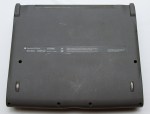



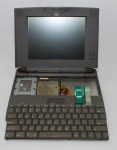




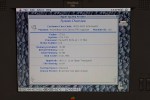




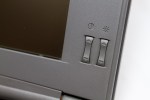


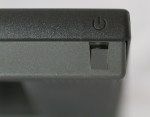




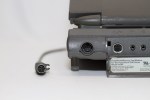
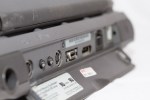


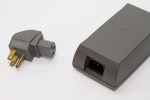

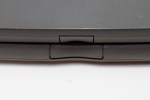

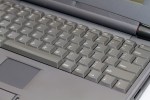





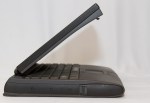

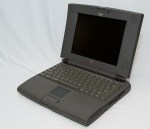
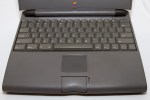

Unfortunately the first incarnation of the Apple PowerPC upgrade had some flaws. Apple’s attempts at a PowerPC PowerBook were also troubled – the 5300 had serious flaws. Even though the 133 MHz PowerBook 1400 had cache it was still cobbled by the same 68k based architecture though it was a more comfortable case design than the 3400 that was twice the speed. Installing unsupported macOS 8.5.1 on my upgraded 540c did help it run better (by virtue of having most of the old 68k system code eliminated) – though many newer apps want 8.6. Flaws in the pcmcia adapter required a design change to be compatible with PowerPC upgrades. As a substitute for usb, quite convenient for using memory cards on the 1400 and 3400 in my experience
LikeLike
The 68k/PowerPC upgrade prohibition should have been more finely grained by Apple. My understanding is you can force on 8.6, 9.0/9.1, and even modded 9.2.2 with the Apple-sold 603e upgrade cards. You just can’t ever remove them.
There were some cards from DayStar and others that had problems, and Apple just decided for performance reasons to treat them all the same, limiting them officially to 8.1.
Wouldn’t be the last time, Apple did the same thing with Mac Pro 3,1 since most of them came with GeForce 7300’s… though after criticism (and refusal to backtrack), they opened up 5,1’s to Mojave “with a GPU upgrade.”
LikeLike